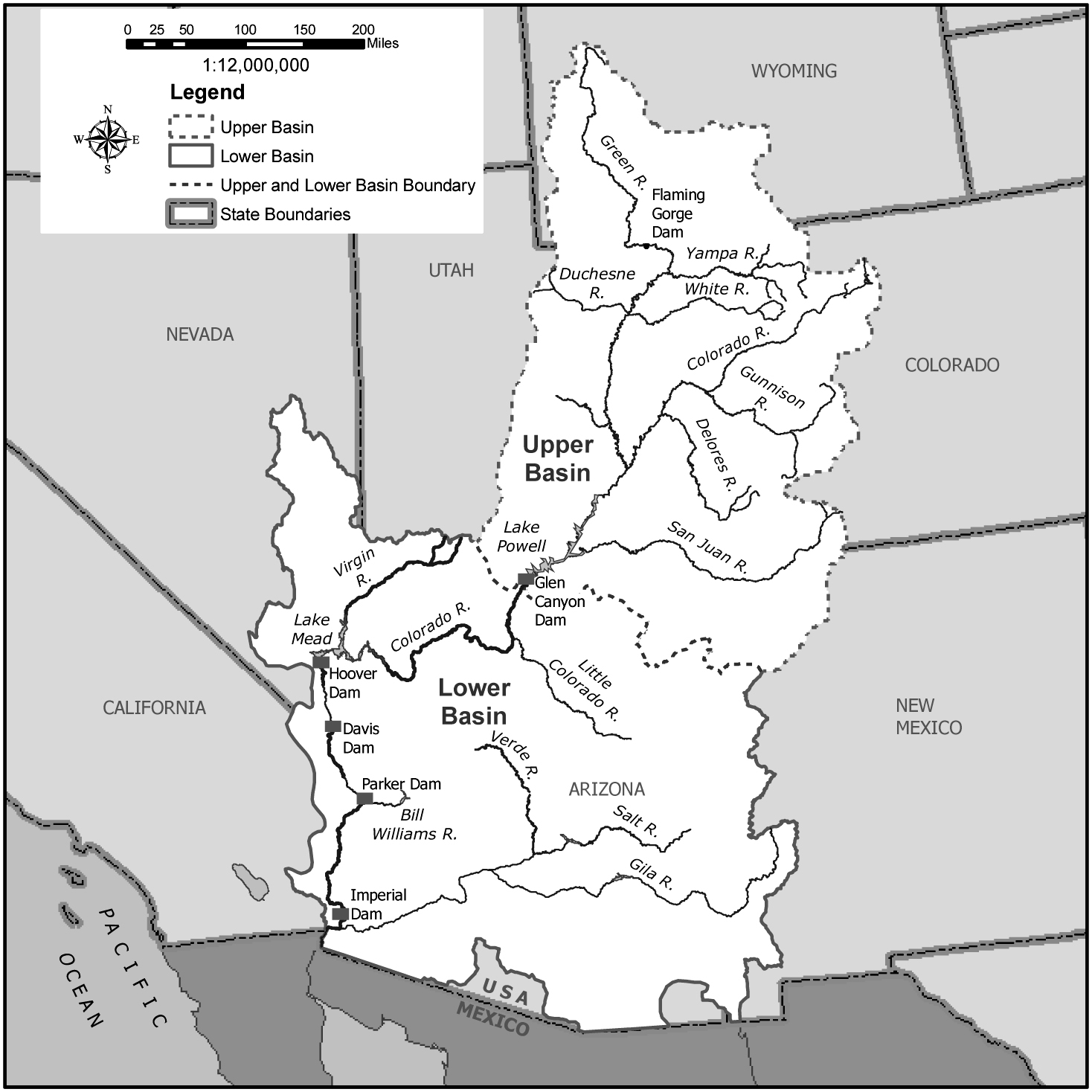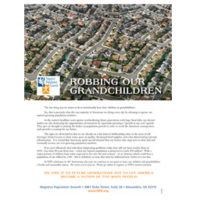The Southwest: Ground-Zero for Global Warming
- Kathleene Parker
- August 1, 2012
- Forum Papers
- Forum Paper
- 0 Comments
Click here for a downloadable, printable PDF version
Experts warn that the American Southwest will be the part of the nation hit first, worst and hardest by global warming. But the desert Southwest— what author Wallace Stegner called “the dry core of the West”—could face a civilization-breaking water crisis even without global warming. There is insufficient water for the current population, much less a population that might well double by mid-century or shortly thereafter, if recent trends hold.[/box]
There is no acknowledgement or discussion of population—regionally or nationally—even though the Southwest is the fastest growing area of this the world’s third most populated nation, behind only China and India.1 Half of all growth globally in recent years occurred in just eight nations: India, Pakistan, Nigeria, China, the United States, Bangladesh, Ethiopia and the Democratic Republic of Congo, in that order. 2 We are by many definitions a population supergiant, yet refuse to openly acknowledge that fact or its carrying-capacity implications.
While growth has slowed to .9 percent with the recession3, the nation until recently grew by 1.1 percent a year, wrongly touted as a low growth rate but representing population doubling times of 65 years or less. (The .9 percent rate represents doublings of about 71 years.) Immigration (immigrants and births to recent immigrants) fueled 82 percent of growth between 2000 and 2010 and could add another 100 million people in 50 years unless immigration—legal and illegal— is quickly returned to lower norms.4
The Southwest, post-1900, changed from one of the most sparsely populated regions in the world to one holding over 45 million people and the nation’s second largest city (Los Angeles). Post 1950, the region saw growth at between 2 percent and 3 percent a year—rates more typical of population-crisis spots in Africa—and representing population doubling times of only 35-to-23) years.5
The United States—with a population of a mere 100 million in 1915, 200 million in 1967— reached a hallmark 300 million in 2006, but just six years later we approach 314 million, with 438 million likely by 2050.6 Even if the Southwest receives only one-third of that l38 million increase over 2006 numbers, it would double its current population.
In the Southwest, warnings about water shortages are ignored by leaders and boom- boosters, increasingly indistinguishable from one another. This spring, for example, the groundbreaking on a 37,000-home development in drought-seared Albuquerque was greeted with no discussion about a worsening drought.
Most of the roughly 45 million people living in the Southwest—up from a mere 3 million in 1900—have no understanding of the vast network of reservoirs and trans-basin diversions on the Colorado River that provide their water. (For the purposes of this paper, the Southwest is defined as those areas, including Wyoming, served by the Colorado River.) There are 17 diversions in the state of Colorado alone, most diverting Colorado River water, originally bound for the Pacific Ocean, under the Continental Divide, to instead flow into the Atlantic watershed to cities along Colorado’s Front Range. Other originally Pacific- bound Colorado River water is diverted to flow into Albuquerque on the Atlantic watershed. Most other diversions remain within the Colorado River Basin, but take waters originally bound for the Sea of Cortez and Pacific into Los Angeles, San Diego, Phoenix, Tucson, Las Vegas, and hundreds of communities between.
The region’s economy centers on construction and real estate, making growth a sacred cow. The assumption is that the explosive growth of the last century that turned dusty cow towns into mega- cities can continue. (For example, Las Vegas, a mere 2,000 people living around a desert spring in 1920, is 2 million people today; Los Angeles, 102,000 in 1900, is now 18 million.) Such thinking is shockingly similar to bankers’ assumptions, pre-2008, that real estate could only grow in value.
ONLY ONE SIDE OF THE COIN
Water in the Southwest is only viewed from the perspective of “supply side,” or finding more water for growth. What this writer views as “demand side,” or how many people demand the resource or matching growth to provable water supplies, is simply never acknowledged or considered.
The only possible “solution” seems to be to somehow find “more” water by diverting existing supplies from old uses to fuel more growth (robbing Peter to pay Paul) via:
- More diversions from an already over-taxed Colorado River.
- “Techno-fixes” such as briny-aquifer or sea water desalting. Ignored are looming “peak energy,” rising energy-costs, and that as reservoirs shrink, hydroelectric production— such as the 10,000 gigawatts generated at Lake Mead and Lake Powell—is threatened.
- Water reuse, or “toilet to tap,” through which citizens drink their own processed sewage.
- Taking agriculture out of production (as we increasing compete against developing nations for food), not to reduce water shortages, but to “grow” larger cities.
- Conservation, again, not to solve anything, but to require each household to use less so that the freed-up water can fuel more growth.
- Or, grandiose schemes, such as one to possibly divert 650,000 acre-feet of the Mississippi River, 775 miles under the Continental Divide into the upper Colorado River drainage area in northwestern New Mexico.7
“Demand side,” for the purposes of this paper, population growth and the rapidly increasing numbers of people demanding the resource, is ignored, a point increasingly criticized by highly credible voices—the Scripps Institute of Oceanography8, the National Academy of Sciences9, the University of Colorado’s Western Water Assessment10, the Pacific Institute11, and no few weather-wise cowboys and farmers.
WATER FLOWS UPHILL
The Colorado River and its tributaries are no longer rivers but an elaborate plumbing system to provide water for cities and power generation, the basis for the regional adage that “water flows uphill towards money.”
Critical is that in average precipitation years more water is used from reservoirs—the equivalent of water banking accounts—than flows into them. The system has worked, until now, because wet years were adequate to replenish reservoirs against dry years. But post-1995, wet years grew infrequent, and with higher demand (a factor of population, not just per-person consumption), the quicker reservoirs draw down and the slower they recharge, especially in drought.
Population, in turn, is linked not just to migrations to the Sunbelt, but to national population dynamics and population policies, or lack thereof. The nation welcomes unfettered immigration absent any consideration of carrying capacity, even though:
- In 1972, the bi-partis an P res idential Commission on Population Growth and the American Future warned that as we reached 300 million (as happened in 2006), among other challenges, resources would be stretched. They recommended a policy to guide decisions (like immigration) affecting population.12
- In the 1990s, President Clinton’s Council on Sustainable Development, as it voiced concerns about a likely U.S. population of 350 million by 2030, advised that immigration be reduced sufficiently for population stabilization.13
Instead, immigration has hovered near 1.2 million a year, with one-third to one-quarter of those initially coming here illegally. That 1.2 million a year is roughly five times historical norms. We welcome more legal immigrants annually than all other nations in the world combined, absent consideration of carrying capacity or other consequences.

According to an April 2012 Department of Homeland Security report, 1,062,040 immigrants were admitted to legal residency in 2011.14 The number from all sources needed to stabilize U.S. population would be no more than 200,000 a year.15 Illegal immigration which, despite decreases associated with the economic slowdown and efforts against illegal border crossings in states like Arizona, is likely not declining significantly, an argument bolstered by data showing no decline in resident legal population.16
Our fertility rate, now at 1.9—down from 2.1— is below replacement level, but while women are having fewer children, more women than ever are having children, especially first- generation immigrants. Ours remains one of the highest birth rates in the developed world and births still exceed deaths by roughly two million a year. For perspective, 2007 births exceeded those at the 1957 peak of the baby boom.17 And, almost universally ignored by the press as it ballyhoos a “falling growth rate” is that growth rate is not just births, but births and immigration. Fifty percent of all growth in the Southwest and effectively all growth in California was fueled by immigration in recent years.18
PAPER WATER VERSUS REAL WATER
Regional leaders depict—through hubris, ignorance or deliberate deception—that because their states “have rights on the Colorado” the water actually exists at levels long known to be wrong. This speaks volumes as to the negligence of the federal government in not correcting, decades ago, a recognized water-allocation error.
The Southwest—and Atlantic watershed cities like Denver and Albuquerque—is mostly dependent on the Colorado River and its tributaries and on aquifers, which are universally being drawn down faster than they can recharge. (Depression- era humorist Will Rogers quipped that the other “big” river, the Rio Grande, which provides water to New Mexico and Texas, was the only river he’d ever seen that looked like it needed to be irrigated.)
In 1922, the Colorado River was allocated, or divided up, under the federal Colorado River Compact. It was believed that most years the Colorado would carry 16.4 million acre- feet (m.a.f.) of water. The Upper Basin states (Colorado, Wyoming, Utah, New Mexico) were…Click the link above to read the entire paper.
Journalist Kathleene Parker grew up in Durango, Colorado, and is a native of the American Southwest, where her family has lived since 1862. She edited and wrote on energy and environmental topics for a Denver Public Library publication that was circulated to eight states, and more recently, covered Los Alamos National Laboratory and northern New Mexico environmental and timber issues for two major New Mexico dailies. She lives just outside Albuquerque and writes nationally on timber, wildfire, water and population issues, and is an outspoken activist for immigration reduction.

